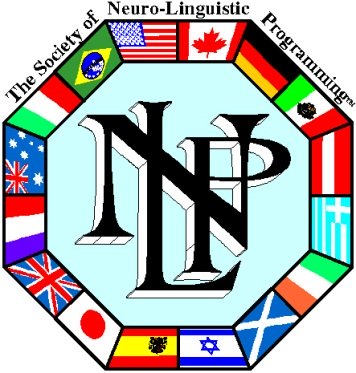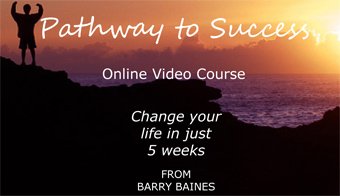Time and NLP techniques
Time and NLP techniques is here to assist you because time is all we have, it is often said. We don’t quite know what it is.

Some scientists now believe that they are the same thing. On occasions time appears to pass too quickly and at other times it appears to drag.
All we have to decide is what to do with the time that is given us
J R R Tolkien - Lord of the Rings
Too much or too little time?
On other occasions we perceive that we have so much of it that we don’t know how to cope, and we all recall when there really didn’t seem to be enough to go around.
Coding
Consider how you and those around you code time. There is no right or wrong way but some of us do it in similar fashion and others quite differently. Stand in a space with enough room to take steps in any direction.
Where is your past?
Imagine that where you are standing now represents the present moment. Think about yesterday. Where do you envisage that in relation to where you are now standing?
Take a step in that direction. Now imagine last month and take another step.
Now think of last year and either take a step in that direction or indicate where it is to you. When you have done that return to your starting position that represents the present moment.
Time and NLP techniques - Stepping into tomorrow
Where do you envisage tomorrow? Take a step in that direction. Where do you see next month? Take another step.
Now think of next year and either take a step in that direction or indicate where it is.
Most
people fall into two groups, although I stress there is no right and wrong
about this; all that matters is how time appears to you.
One group thinks of the past as behind them somewhere (sometimes straight behind and sometimes at a slight angle).
That group usually sees the future either straight ahead of them or, again, at a slight angle in front of them.
Time and NLP techniques - In time
In
NLP we describe this as in time. It is suggested – although you will wish
to test it for yourself – that people who think in time see events through their own eyes and experience the past
and present as now.
It is also said that it is difficult for them to look objectively at past events, plan ahead or estimate how long it will take to achieve something. The moment, however, is of great importance to them.

Through time
The other group tends to see time running across in front of them, sometimes straight but others see it as a curve.
They usually see the past extending off to the left or right, and the future in the opposite direction.
In NLP this is described as through time. They see events flowing in front of them.
It is suggested that they can plan better and monitor progress, but they may overlook the item of pressing importance now.
I think it is highly unlikely that very few of us fall into one category or the other.
Although we may have a particular way of viewing time, either in or through, the way we behave is rarely black or white.
In time people may be motivated by the use of expressions such as enjoying the moment, be aware of, now, here and feel.
Through time people are more likely to gell with next time, previously, in future, historically and in the past.
Time and NLP techniques - Language
Listen out for the language used by your friends and families and see if you can work out where they fall on the spectrum.
Do their personality characteristics fit with the general descriptions outlined above or are they more flexible than that? These are all clues to the way people think and act.
Consider
this a little further. Close your eyes
and think of something in your distant past.
Your mind will make a picture of that memory.
Now think of something that happened very recently, say yesterday or today. Observe the differences between those pictures. Do they appear to be in the same position or are they in slightly different places?
Is one bigger or smaller than the other? Is one more colourful than the other? Is one close and the other far off?
Now think about something you want to happen in the future. Where is that? Go through and compare the various submodalities and see how they differ from each other.
Time and NLP techniques - Back to the future
Now you have an idea about how you think about time in your own mind and how you code it, let us try another experiment.
I wonder if you are old enough to remember the film Back to the Future with the DeLorean time travel vehicle. It is a bit like that but it all happens inside your mind.
Go
through these instructions then close your eyes and perform the exercise. Think of something that you need to tackle
but feel short of resources.
As an example, assume that you have a presentation to make but you are anxious about it.
Mentally stick a flag in the ground to represent the present moment and then imagine yourself floating up above your line and looking down on the flag.
Time and NLP techniques - Floating along the line
Now
float along your timeline into your past and search for a moment when you were
confident or determined and made something happen. It may not have been making a
presentation.
It may not even be something that you are especially proud of now because you may have done it for all the wrong reasons, but that doesn’t matter. What you are seeking is that confidence and determination to get what you want.
If you
can find more than one occasion, so much the better. When you have located those pictures,
feelings and sounds associated with them, observe the submodalities
closely.

That is to say, note the size of the pictures, the position in your vision, whether they are close or distant, fuzzy or sharp, in colour or in black and white. Note how strong the feelings are and where they are within you.
Listen
to any sounds associated with them. Are
they loud, soft, shrill or gentle. Hold
on to all those sounds, feelings and images and bring them back to the present
moment. Now take a moment to imagine the
presentation you are to make and see where that picture is.
Adjust the submodalities of your presentation is to those of the confident and determined memories and sense how that boosts your confidence.
Time and NLP techniques - Accessing your resources
Now you know how to access your resources in this manner, if you feel there is anything else you need to help you with your presentation, you can go back over your timeline and look for it. Bring it all into the present.
Let this exercise be part of your planning for future events, and you will be able to access resources you forgot you ever had.
Gain FREE access to my self-confidence video
To gain free access to my self-confidence video enter your email address and first name in the box below. This will also keep you up-to-date with my free newsletter Inspirations.
As a bonus for subscribing you'll receive the first three chapters of my book Towards Success, where you can learn more about NLP techniques, from Anchors to Modelling, and my 50 favourite inspirational quotations.
Return from Time and NLP techniques to
The Secret of Mindpower & NLP Home
Return to Site Search & Contents Page

Change your life in just 5 weeks
Discover the pathway to success with my online video course. Learn more

Download NEW ebook Your Genius Within and find out how to uncover your own inner genius

NLP Articles
- Anchors
- Anchors explained
- Anger Management tips
- Anxiety Panic Attacks
- Beating disappointment
- Beating drug addiction
- Best self-help book
- Big events
- Body control module
- Body language attraction
- Body language flirting
- Body language in communication
- Body language interpretation
- Body language of a liar
- Body language signs
- Boost self-confidence
- Building Rapport
- Changing bad habits
- Changing beliefs
- Changing States
- Children
- Christmas (Holidays)
- Christmas & New Year greetings
- Chronic pain management
- Conquering Fear
- Crohn's Disease
- Cure for a Phobia
- Deal with your fear
- Deletion
- Determining your destiny
- Developing your senses
- Disaster to Triumph
- Distortion
- Drawing the line
- Embedded Commands
- Enthusiasm
- Exams
- Expecting the Best
- Expert Relationship Advice
- Eye accessing cues
- Fear of driving
- Fear of elevators
- Fear of flying
- Fear of the dentist
- Fear of vomiting
- Fear, Mental Blocks & Hesitation
- Fear, Uncertainty and Doubt
- Fight or flight response
- Finding Solutions
- Forever Worried?
- Friendly persuasion
- Generalisation
- Get the life you want
- Getting lucky
- Getting over your past
- Goal Setting Tips
- Goal Setting Tools
- Goal Setting Tools, More
- Great self-help books
- Grief
- Happy retirement
- Healthy Mind
- High blood pressure
- How long will I live?
- How to be lucky
- How to read body language
- Hypnosis & NLP
- Hypochondria
- Imagining perfect performance
- Improving speed reading
- Instant Mood Lift
- Interviews
- Knowing yourself
- Learn NLP
- Life Values
- Maintaining weight loss
- Make you thin
- Making it happen
- Managing change
- Meddling Mom
- Meeting People
- Mental rehearsal techniques
- Meta Model
- Metaphor
- Modelling
- Modelling Genius
- More NLP techniques for weight loss
- NLP Books
- NLP Courses
- NLP Practitioner Course
- NLP Master Practitioner Course
- NLP Secret
- NLP jargon buster
- NLP Modelling helped me
- OCD symptoms
- OCD treatment
- Overcoming low self-esteem
- Overcoming stage fright
- Pacing & Leading
- Persuasion
- Presuppositions
- Presuppositions (2)
- Problem solving
- Public Speaking
- Reaching agreement
- Reframing
- Self-confidence
- Self limiting beliefs
- Self-image
- Sportsmen Guide
- Stage fright tips
- Stammering
- States
- Stop binge eating
- Stop Smoking
- Subliminal Persuasion
- Success Principles
- Techniques for persuasion
- Techniques for weight loss
- The meaning of NLP
- Time & NLP
- Towards
- Towards & Away
- Ulcerative colitis
- Weight Loss
- Weight loss techniques
Articles on HYPNOSIS:
- Big events
- Conversational Hypnosis
- Covert hypnosis
- Deepening self-hypnosis
- Depression Hypnosis
- Handshake interrupt
- How to do self-hypnosis
- How to hypnotise your audience
- Hypnosis and Weight Loss
- Hypnosis NLP
- Hypnosis: Right or Wrong
- Hypnosis Stories
- Hypnotic language
- Hypnotism Stories
- Hypnosis story for you
- Hypnosis to quit smoking
- Instant self-hypnosis (age regression)
- Practical self-hypnosis
- Self-Hypnosis
- The Milton Model
Articles about THE SECRET of:
- Abundance Mentality
- Achieving more
- Beating Domestic Violence
- Being bothered
- Being Happy
- Best Self-help Book
- Conquering road rage
- Coping with criticism
- Dealing with pride
- Defeating stress
- Discover the secret of wealth
- Genius
- Getting off to sleep
- Getting over a break up
- Getting over your temper tantrum
- Health
- How to deal with grief
- Imagination
- Influence
- Love
- Making Money
- Managing others
- Memorising a Deck of Cards
- Memory
- My Success
- Organising Memory
- Overcoming tiredness
- Overcoming worry
- Perpetual energy
- Remembering
- Secret Law of Attraction books
- Sleeping well
- Speed Reading
- Super Memory
- Surviving a recession
- Surviving negativity
- The Secret Law of Attraction
- Towards
- Teachers of the Secret
- Waiting for God
- Wealth Building
- Weight Loss
Articles about COACHING:
- Barriers to effective communication
- Communication
- Executive Business Coaching
- Feedback
- Free interview tips
- Free Life Coaching
- Goal Setting Tips
- Goal Setting Tools
- Goal Setting Tools, More
- Life & Executive Coaching
- Personal Development Plan
- Problem solving
- Success Principles
- The Secret of my Success
- Time Management
Articles on GENIUS and MIND POWERS:
- Activating genius
- Become a genius
- How long will I live?
- Mind Powers
- Misty Reflections
- Modelling Genius
- The Secret of Genius
Articles about MEMORY:
Articles about RELATIONSHIPS:
- Beating domestic violence
- Body language flirting
- Expert relationship advice
- Healthy family relationships
- Hurt feelings
- Love
- Relationship problem advice
- Signs of true love
- The secret of getting over a break up
Articles on WEALTH:
Articles on WEIGHT LOSS:
- Best Weight Loss Plan
- Body control module
- Easy weight loss
- Hypnosis and Weight Loss
- Maintaining weight loss
- More NLP techniques for weight loss
- NLP techniques for weight loss
- NLP techniques to make you Thin
- NLP weight loss techniques
- Stop binge eating
- The Secret of weight loss
- Weight control help
- Weight loss tips
- Why have I lost weight?
Articles on SECRET and INSPIRATIONAL TEACHERS:
- Bill Harris
- Bob Proctor
- Dr John F DeMartini
- Hale Dwoskin
- Jack Canfield
- Joe Vitale
- John Assaraf
- Lisa Nicholls
- Michael Bernard Beckwith
- Stephen R Covey
Real Women of Genius Articles:
Real Men of Genius Articles:
- Abraham Lincoln
- Albert Einstein
- Antoni Gaudi
- Carl Jung
- Charles Darwin
- Charles Dickens
- Christopher Wren
- Confucius
- George Washington
- Hannibal
- Horatio Nelson
- Isaac Newton
- Julius Caesar
- Lawrence of Arabia
- Leonardo da Vinci
- Michelangelo
- Mohatma Gandhi
- Napoleon Bonaparte
- Nicolas Copernicus
- Oscar Wilde
- Rembrandt
- Robert Burns
- R L Stevenson
- Socrates
- Walt Disney
- William Shakespeare
- Wolfgang Amadeus Mozart








New! Comments
Have your say about what you just read! Leave me a comment in the box below.